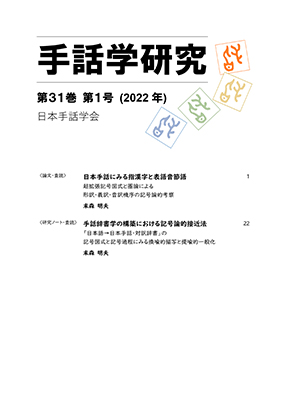This paper describes semiotic consideration of the individuality and commonality among coinage mechanisms of isomorphic, isonymic, and isophonic signs in Japanese Sign Language (JSL). First, a meta extended sign scheme was applied to visualise semiosis with ternary structures of elements selected from four elements (phonemes, letters, signs, and meanings) for various mechanisms, which contains a connection between significant or meaningless elements. Second, the category theory was applied to visualise the coinage mechanisms of isomorphic, isonymic, and isophonic signs, which were constructed through a natural transformation in functor category, and indicated natural equivalence. The natural equivalence of three mechanisms suggested systematicity in the coinage mechanisms in Finger Kanji and logosyllabic signs in JSL. Third, the significant or meaningless elements in the coinage mechanism of isomorphic signs were layouted in a sign hierarchy. The constellation indicated a border transfer between iconic and symbolic fields. The results clearly indicated the individuality of the coinage mechanism of finger Kanji and logosyllabic signs in sign languages in the east Asian cultural sphere, in fact, finger Kanji or logosyllabic signs are not observed in sign languages in Euroamerican countries, phonemic letter cultural spheres. The results also indicated dynamic multilayer of the literal and graphic properties of finger Kanji and logosyllabic signs in JSL, which should contribute to consider the universality of the coinage mechanism of sign languages in the east Asian and Euroamerican countries. The systematic and theoretical understanding of the coinage mechanisms of the signs in JSL with linguistic and non-linguistic/iconic signs in symbolic, categoric, and iconic fields will contribute to semiotic consideration of sign languages.
View full abstract
